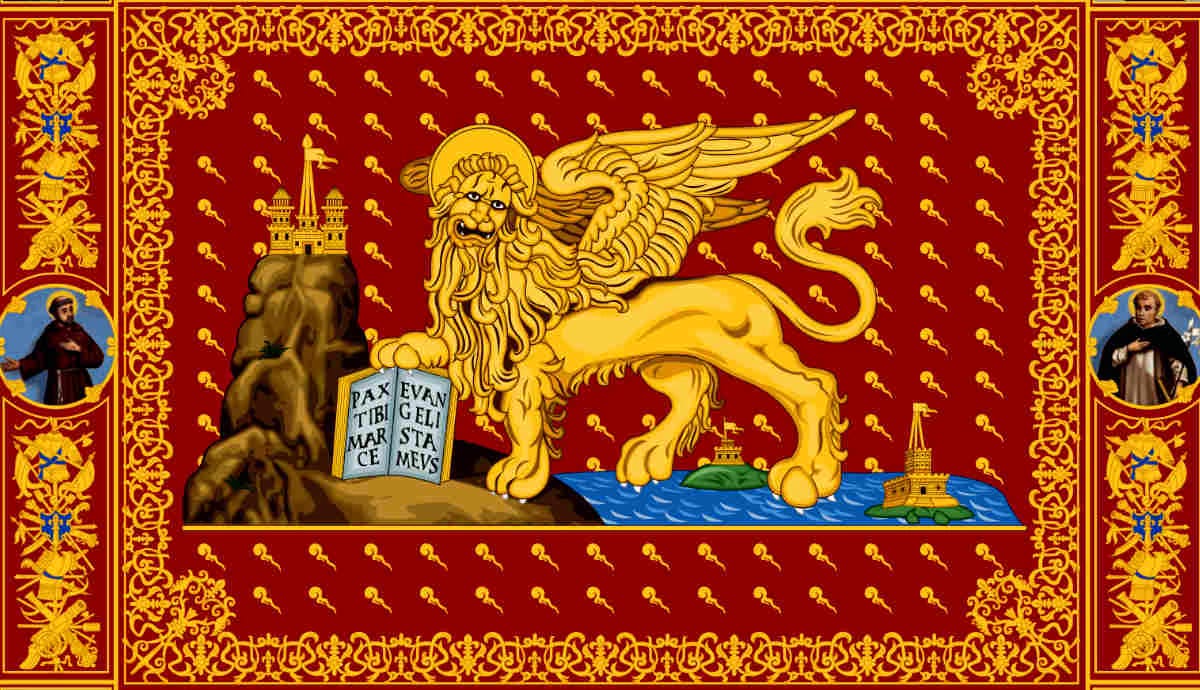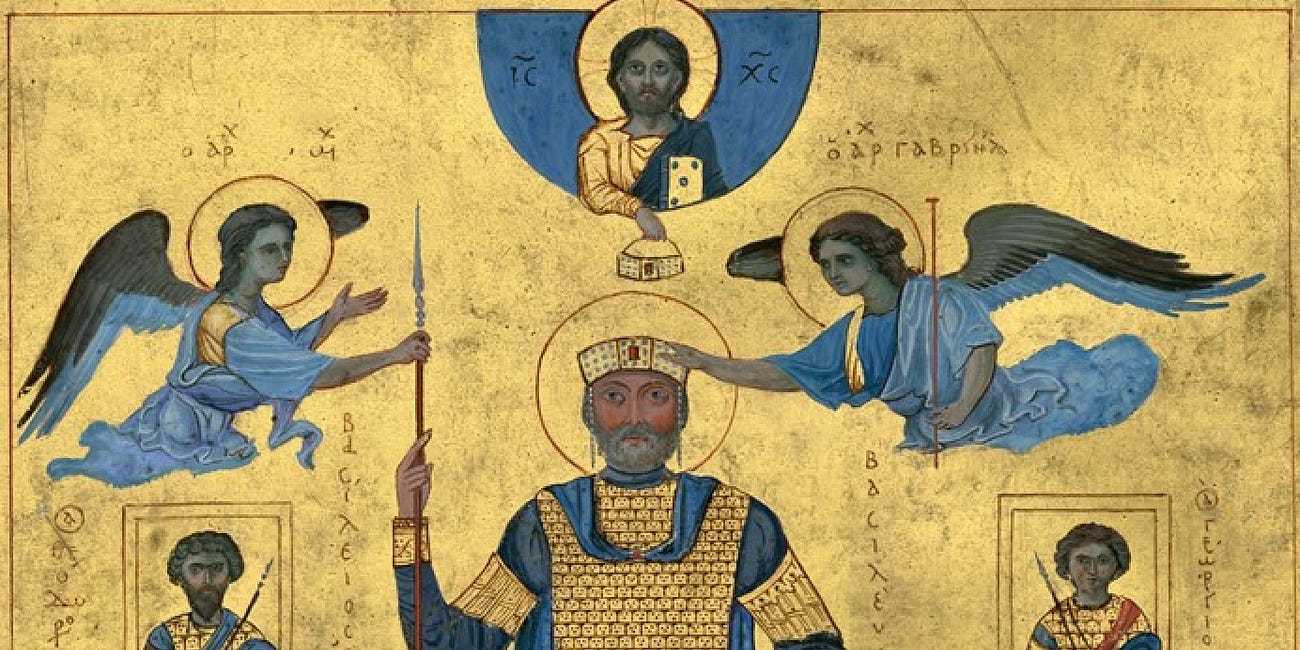This is a history of a unique political entity – an oligarchic republic surrounded by feudal autocracies, religiously moderate hundreds of years before toleration developed anywhere else, and with a highly profitable form of public-private capitalism. In this splendid book, the reader is treated to the entire arc of rise, reign, and fall, in luminously beautiful prose and plenty of fascinating stories.
In the beginning, Venice was a stronghold for Roman citizens seeking refuge from waves of barbarian invasions, 2.5 miles off the coast, a backwater as the Western Roman empire crumbled. Then, as a client under the protection of Byzantium, Venice slowly rose to become the premier commercial power of the Mediterranean. As a small island, everyone knew each other, so had to act in a relatively trustworthy manner in a time that piracy was sometimes indistinguishable from trade. It helped that Venetian merchants stole the body of St. Mark, using it as the basis for cosmic legitimacy and lending a kind of ideological coherence to their community – they acted in concert in unique ways for over 1,000 years.
The Venetians developed effective laws, the greatest seamanship in existence for a time, and amassed capital that it could use for further investment, mercenaries, and bribes. Its trading partners appreciated these attributes, i.e., that Venice was relatively more trustworthy than its competitors. Together, these attributes enabled Venice to establish a number of exceedingly profitable monopolies over centuries, in particular that on spice for Europe (transport via the silk road over Asia). Though it fought many brutal wars with competitors Genoa and Pisa, Venice emerged triumphant time and again.
About 1200 CE, Venice became an empire and reached its apogee, controlling vast stretches of land and sea, often under dangerous employment of condottieri (knight mercenaries). It also moved into a unique public-private domain, in which the state had a strong hand in organizing the economy, in particular setting standards for sea vessels but also trading practices, maintaining the rule of law, and overseeing the arsenal, which could produce fully functional war galleys for the Mediterranean in a matter of hours, complete with strategic cutting-edge technology. These attributes made it an even more dependable trading agent for its allies and partners – they knew where the ships were, what their quality would be, etc. It is during this period that the Doge, Enrico Dandalo, led the warriors of the 4th Crusade in 1204 to sack Byzantium, the most shameful despoliation of a civilized capital in the history of Christendom.
But already, as the Renaissance was beginning to flower, the seeds of Venice's decline were sown. With its landholdings on the Italian peninsula, it was over-extended. Curcially important, mastery of trade slipped from Venetian hands once the Portuguese discovered the cape route around Africa – the Mediterranean was no longer the center of the world, immediately consigning Venice to backwater status in the Adriatic. With its naval technology suddenly obsolete, it never recovered. Even worse, the Ottoman Empire was challenging Christendom, a force against which the disunified West could not yet compete. After Constantinople fell in 1453, Venice was the only true bulwark against the Ottomans. Finally, with its haughty distance, pragmatic cynicism, and naked self interest, Venice had made innumerable enemies in Europe, and faced a series of wars against huge coalitions, such as the league of Cambrai.
Still, for centuries, the Venetians were able to pull together and recover in ways that awed its adversaries. It is astonishing to read how often Venice was on the edge of complete ruin, only to emerge renewed and powerful, to fight its way to survival and then dominance. A great deal of this was due to its unique political system, which allowed fresh infusions of talent into leadership circles at crucial times and institutionalized the alternance of power. However, with the loss of trade, the energy of Venice was eventually sapped, leading to a long decline and a tenuous diplomatic balancing act (of which Casanova was a part) as the forces of revolution were rumbling in 18th Century France; eventually, it became a tourist pleasure spot of wild indulgences and petty intrigue. In 1797, it fell to the young Napoleon; though looted, Venice was never destroyed – it was the first occupation by a foreign power in its 1400-year history.
This is an incredible story, in many ways as a coherent span of time equal to Rome itself. You can tell that this book was a labor of love – every page is engaging and elegantly written. The feeling of witnessing history unfold is rarely so well executed, truly it is an inspiration and source of wonder.
Related:
The Gothic economy
The subject – how the world economy and trade system worked in the 13th and early 14th centuries – might not sound exciting, but for anyone interested in history, this is an essential read. This was the time of an economic and technological boom without precedent, in which Kubilai Khan, various European princes, and many others were able to interact and…
Venetian art as reflection of its politics
Garry Wills’ book is about Renaissance Venice. It is organized around several themes. In Imperial Disciplines, Wills examines the historical origins and unique structure of its state, which allowed Venice to escape the power struggles that dogged medieval Italy, i.e. unlike the innumerable city st…
Love and politics in the twilight of the Venetian Republic
This is a book about a great passion between a young patrician and a woman from a “questionable” past. The author's approach – it was really a family enterprise based on the 250-year old letters his father found from a direct ancestor – is to paint a wide tableau of the era from the point of view of two young and doomed lovers. Though this may sound mel…
The Eastern Rome that survived 1,000 years more than the West
“Byzantium” was an invention of the Enlightenment: it was taken to embody imperial cruelty, theocracy, bureaucratic fiat, and blatant injustice. According to Anthony Kaldellis, this was a caricature designed to contrast against the virtues of enlightened despots








